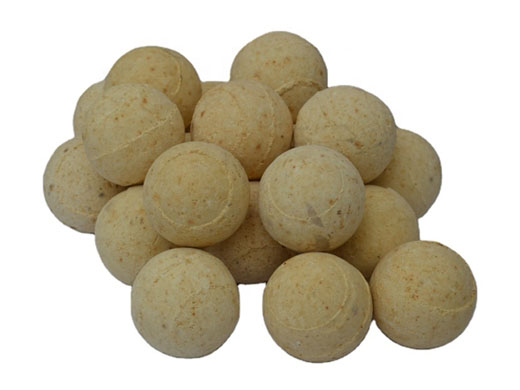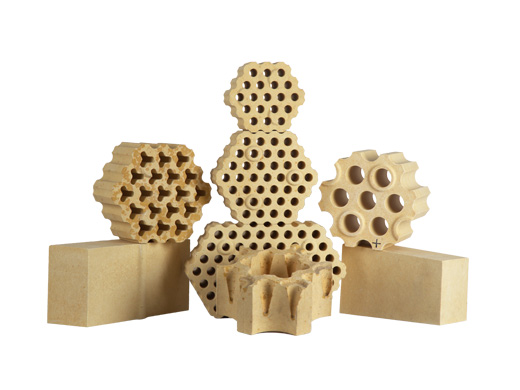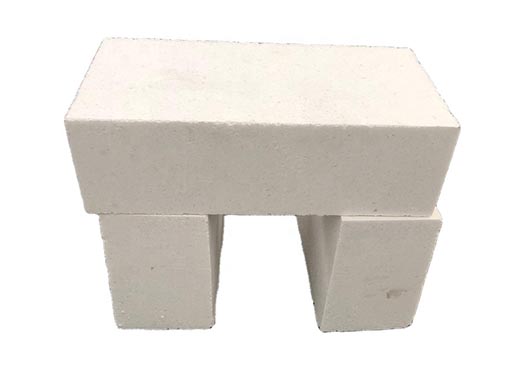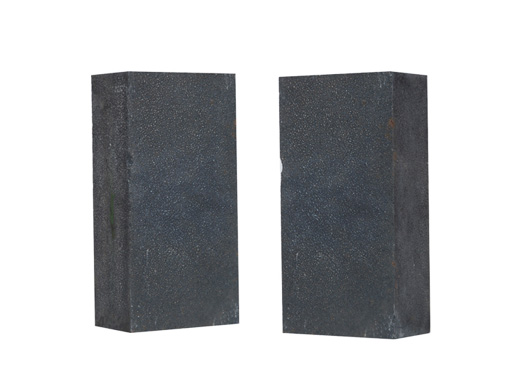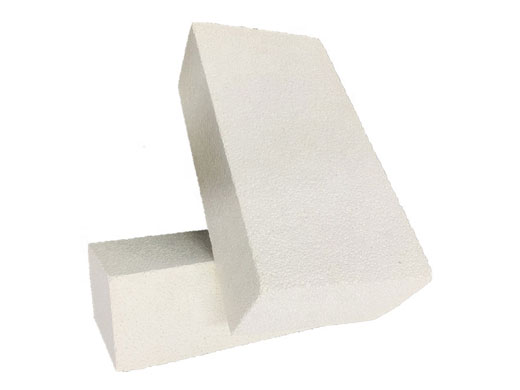Industrial silicon electric furnace lining refractory masonry
Industry news | Refractory Wiki | Refractory news | Enterprise news |1.1 Furnace bottom refractory brick masonry
From bottom to top, there are two layers of asbestos boards and an elastic layer of refractory aggregate. After tamping and super-flat, the center line is set, the bricks are divided, and the clay brick and high-alumina brick masonry are started. The bottom of the furnace is made of 65 high-alumina bricks, and the g2 and g4 brick types are based on the ratio of 1:2 to match the radian. The bottom of the furnace adopts the dry laying method, and the refractory brick layers are staggered in a cross shape, and each layer is staggered by 45° to press the brick joints. The brick joints are filled with high-alumina fine powder, and the gap is not more than 1mm. The dry lining has less moisture, which is beneficial to the oven, but the filling material has a large porosity and the lining is relatively loose, which is not conducive to ensuring the integrity of the lining. Relatively speaking, wet laying is pouring brick joints with refractory mud, which improves the integrity of the furnace lining, but too much moisture will consume too much heat during the oven, which will easily cause temperature fluctuations.
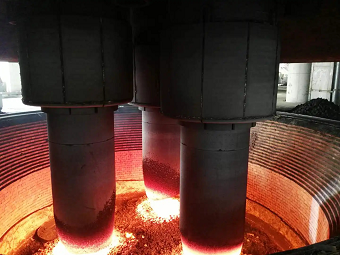
1.2 The furnace wall is built with refractory bricks
The inner wall of the furnace shell is covered with two layers of asbestos boards and a layer of fiber felt (about 20mm in thickness), which should not be too thick, otherwise loose and cracking will occur. The first ring is made of clay bricks, and the other ring is made of high-alumina bricks. The ratio of insulation bricks and clay bricks should be maintained at 1:3 (one insulation brick follows three layers of clay bricks, and the next layer is built on the basis of three layers). When the height of the ring brick layer reaches the carbon brick thickness of 345mm, prepare the third layer of carbon bricks.
1.3 Laying and masonry of carbon bricks at the bottom of the furnace
The cross-sectional size of the carbon brick is 345X345. It is pre-laid first, and then the gap is compacted with carbon tamping material to test the thermal expansion of the self-baking carbon brick to make it a whole. This method is used until the second layer of carbon bricks is laid. The two layers of carbon bricks are staggered at an angle of 45°~60° and try to ensure that the gap between the carbon bricks does not go straight to the furnace mouth. The gap between the carbon bricks is less than 2mm, and it is qualified if the bag seal is just inserted on site.
1.4 Ring-laying charcoal brick masonry
After the two layers of carbon bricks are built, the furnace wall should be replaced with bricks. After the outer layer of thermal insulation bricks is built, a gap of 60~80mm is left, and then the ring-laid carbon bricks are laid on the inside. The gap should be filled with carbon ramming material, or it can be replaced with carbon cement, which mainly acts as a buffer. Ring-laid carbon brick 1500X40X (35,40), the trapezoidal section is to ensure the radian of the ring-laid. During the ring-laying process, two ring-laying bricks should be placed on both sides of the carbon bricks at the furnace mouth, and the ring-laying carbon bricks should be divided into five sections around the five furnace mouths. The two sides of the carbon bricks are built to the middle until there is an opening of irregular size in the middle, which is called a closed door. The carbon bricks at the door are processed and built on site.
According to the above basic masonry method, the lining refractory material of the industrial silicon submerged arc furnace can ensure the integrity of the furnace body without deformation.
Newest
- 2023-07-31
Properties of silicon nitride and its application in refract···...
- 2023-07-31
Properties of silicon nitride and its application in refract···...
- 2023-07-31
Properties of silicon nitride and its application in refract···...
- 2023-07-31
Properties of silicon nitride and its application in refract···...
- 2023-07-31
To explore the application of magnesia carbon brick in refra···...
Solution
- 2022-11-22
The technical requirements and production processes of fused···...
- 2022-09-06
Price Determinants of high alumina fire bricks...
- 2022-08-30
Technical performance and technology of silica mullite brick···...
- 2022-08-27
Refractory materials in various parts of the furnace and pre···...
- 2022-08-23
Magnesite chrome brick composition process classification...
